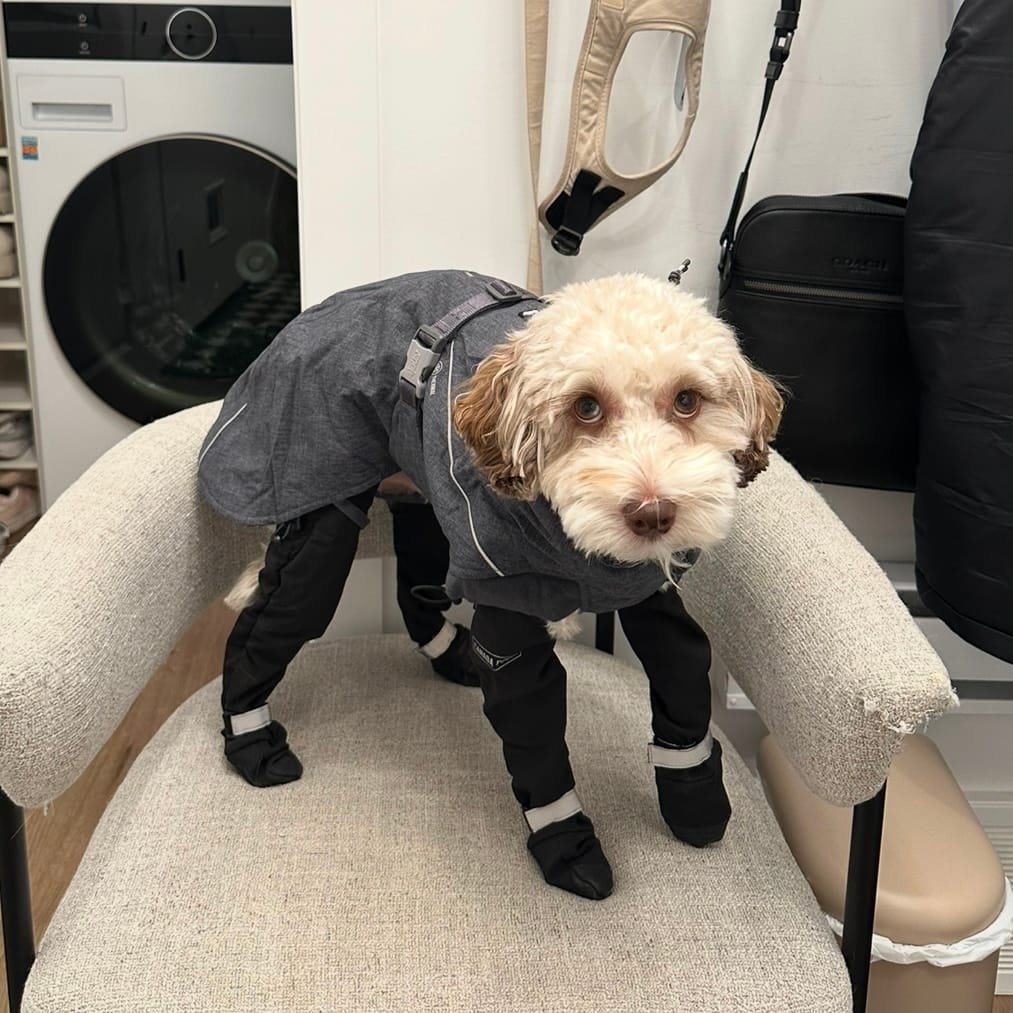Understanding Your Dog’s Winter Needs
Winter presents unique challenges for our canine companions, stemming from physiological differences across various dog breeds. Generally, dogs with thicker coats, such as Siberian Huskies or Alaskan Malamutes, demonstrate greater tolerance to cold weather conditions. Conversely, short-haired breeds like Chihuahuas or Greyhounds are particularly susceptible to low temperatures due to their lack of insulation and body fat. Understanding the inherent characteristics of your dog’s breed is crucial for gauging their comfort level in winter weather.
Moreover, size plays a significant role in determining a dog’s cold tolerance. Smaller dogs lose body heat more rapidly due to a higher surface area-to-volume ratio. This means that smaller breeds often require additional protection against the cold. In contrast, larger dogs, particularly those with dense fur, can withstand colder temperatures but are not immune to the effects of extreme weather.
Recognizing the signs that indicate your dog is feeling cold is essential for their well-being. Shivering, lethargy, and reluctance to venture outside are common indicators that your pet may be uncomfortable. Additionally, dogs may raise their paws or seek warm surfaces, signaling their discomfort from cold ground temperatures. It’s vital for pet owners to monitor these behaviors and take necessary precautions, such as providing them with protective gear like jackets and booties when venturing outdoors.
Understanding your dog’s winter needs sets the groundwork for ensuring their comfort and health throughout the colder months. By recognizing the unique requirements of different breeds and being mindful of the signs of discomfort, pet owners can effectively implement measures to keep their dogs warm and safe during winter outings.
Choosing the Right Winter Gear for Your Dog
As the colder months approach, it becomes imperative to ensure that our canine companions are well-equipped to handle the harsh winter elements. Selecting the appropriate winter gear is essential not only for comfort but also for the overall well-being of your dog. The market offers a wide array of options, including coats, sweaters, and boots, each designed to cater to a dog’s unique needs.
When exploring winter clothing, it is critical to begin with accurate measurements of your dog. Taking the time to measure your pet’s neck, chest, and length will facilitate informed decisions about size and fit. An ill-fitting coat or sweater can lead to discomfort and restricted movement, impairing your dog’s ability to enjoy outdoor activities. Therefore, it is crucial to refer to the sizing charts provided by manufacturers, as different brands may use varying standards.
In terms of materials, look for items made from high-quality, weather-resistant fabrics. Thermo-engineered materials or fleece-lined coats are excellent choices, offering optimal warmth without sacrificing flexibility. These materials can help trap body heat while allowing ample room for movement, which is vital for active dogs. Additionally, reflective elements can enhance visibility during dark winter afternoons, contributing to safety during outdoor walks.
- Fit & Sizing Guidance:Achieve an accurate fit using our detailed measuring guide and size chart. Designed to accommodate…
- Integrated Harness Design:This dog jacket includes a built-in harness. The design simplifies the process of getting read…
- Weather Protection & Materials:Designed for cold weather conditions. This Norbi dog coat is constructed with a wind-resi…
Protection should extend beyond the body to the ears and tail, which are often overlooked. Winter accessories like ear wraps and insulated blankets can shield these areas from biting winds and extreme cold. Tail covers, though less common, can provide necessary protection for smaller breeds with shorter hair, ensuring that no part of your dog is neglected. By carefully selecting and properly fitting winter gear, dog owners can ensure their furry friends remain warm, safe, and comfortable throughout the winter season.
Protecting Paws from Snow, Ice, and Salt
During the winter months, the combination of snow, ice, and salt can pose significant threats to your dog’s paws. Exposure to these harsh elements can lead to various injuries and irritations that may cause discomfort or even serious health issues for your pet. Among the most common concerns are cracked pads, continual exposure to icy surfaces, and frostbite. Recognizing the early signs of these conditions is crucial. Indicators such as limping, excessive licking of the paws, or visible cracks can suggest that your dog is experiencing discomfort.
Cracked paw pads are not only painful but can also become prone to infections. Additionally, the salt used on roads and sidewalks during winter can irritate sensitive paw skin, leading to redness and inflammation. Frostbite is another significant risk, particularly for dogs with shorter coats or those who spend extended periods outdoors. Symptoms of frostbite can include a change in color of the pads, coldness, or swelling. Maintaining vigilance while walking your dog in winter is essential to spotting these issues promptly.
One effective way to mitigate these risks is by applying paw balm or wax before walks. These products provide a protective barrier that can help shield the paws from the icy ground and corrosive elements. Additionally, investing in quality dog boots can also offer an excellent defense against winter’s harsh conditions. While some dogs may initially resist wearing boots, gradual training and positive reinforcement can help them acclimate. When selecting dog boots, ensure they fit comfortably and securely, providing enough grip to prevent slipping on icy surfaces.
By understanding the threats posed by winter elements and taking proactive measures, pet owners can help keep their dogs safe and comfortable during winter walks, ensuring the overall health of their beloved companions.
Winter Safety Tips and Tricks for Outdoor Adventures
As winter envelops the landscape in a blanket of snow, the excitement of outdoor adventures with your dog remains ever-present. However, it is essential to prioritize safety during these chilly excursions. Maintaining a consistent routine with your walking schedule can help ensure your dog stays accustomed to physical activity, but it is crucial to adhere to safe time limits. During extreme cold, limit walks to shorter durations to prevent discomfort and exposure to hazardous temperatures.
Choosing the right time of day for your walks is pivotal. Late mornings or early afternoons typically offer moderately warmer temperatures, making them ideal for outdoor activities. Avoid early mornings and late evenings when the temperatures plummet, as this can significantly increase the risk of frostbite and hypothermia in dogs. Additionally, take care to steer clear of areas prone to dangerous winter conditions, such as icy paths or heavy snowdrifts, as these can pose hazards to both you and your furry friend.
Hydration is a key factor during outdoor winter adventures, despite the lower temperatures. Dogs can become dehydrated just as easily in winter as they do in warmer seasons. Ensure access to fresh water before, during, and after outings. Moreover, it is essential to keep your dog energized and engaged during these activities. If you notice signs of fatigue or discomfort, such as lagging behind or reluctance to continue, it may be time to rest or head indoors.
Monitoring your dog’s behavior throughout winter excursions is vital for their overall well-being. By being aware of their comfort level and potential signs of distress, you can foster a safe and enjoyable winter experience for both of you. Engaging in these best practices will enable both you and your dog to relish in the magic of winter while prioritizing their safety and health.







